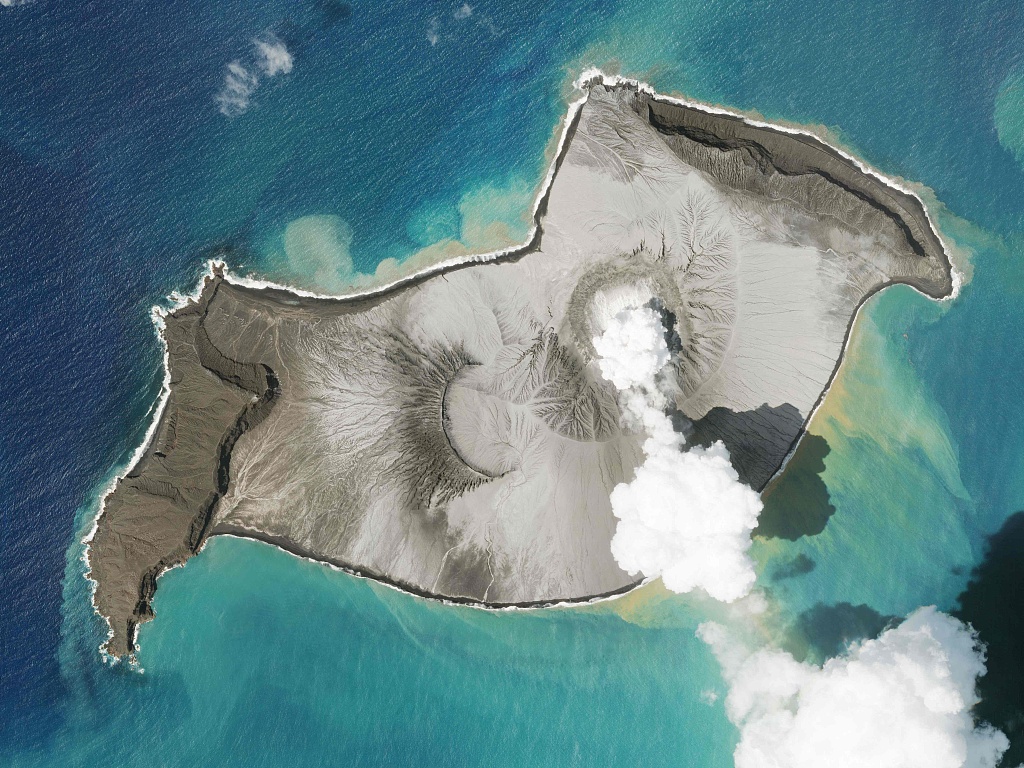The eruption of the Hunga Tonga-Hunga Ha'apai volcano in 2022 shot out an unprecedented amount of water vapor into the sky, reaching heights of up to 55 kilometers and depleting five percent of the ozone layer in some regions in just one week, according to a study published on Friday.
The research published in "Science" details balloon measurements taken all the way over near Reunion Island in the Indian Ocean to understand how volcanic eruptions influence climate and ozone chemistry.
The volcanic eruption on January 15, 2022 was the largest recorded since 1883.
The increased humidity in the stratosphere led to a series of interactions between other components shot out from the volcano that ultimately broke down ozone over the tropical southwestern Pacific and Indian Ocean regions, the authors said.

A photo shows the eruption on the Hunga Tonga-Hunga Ha'apai volcano, January 7, 2022. /CFP
A photo shows the eruption on the Hunga Tonga-Hunga Ha'apai volcano, January 7, 2022. /CFP
Laura Revell of the School of Physical and Chemical Sciences, University of Canterbury, said major volcanic eruptions can inject gases and particles into the stratosphere, approximately 15 to 50 kilometers above the Earth's surface, where the protective ozone layer resides.
It is fairly common to see short-term ozone losses following a major eruption as a result of reactions involving volcanic aerosol and chlorine, Revell said, adding researchers started their field campaign a mere five days after the eruption and obtained a highly detailed data set.
The 5-percent ozone layer loss is a significant amount, but not as large as the Antarctic ozone hole, where around 60 percent of the ozone layer is depleted between September and November each year, she said.
Olaf Morgenstern, principal scientist – atmosphere and climate, the National Institute of Water and Atmospheric Research, said the volcanic eruption was the biggest of the satellite era, in terms of explosive power, altitude of the plume, and particularly in how much water it injected into the stratosphere.
The study is the culmination of an ongoing international effort to elucidate the impact of the volcano on atmospheric chemistry and climate, he said.
"Some highly unusual ozone depletion happened in the tropics in the aftermath of the eruption, especially given the generally small variability of ozone in that part of the world," Morgenstern said, adding some unusual polar ozone depletion is expected to happen after the volcanic material reached the Antarctic.
Source(s): Xinhua News Agency